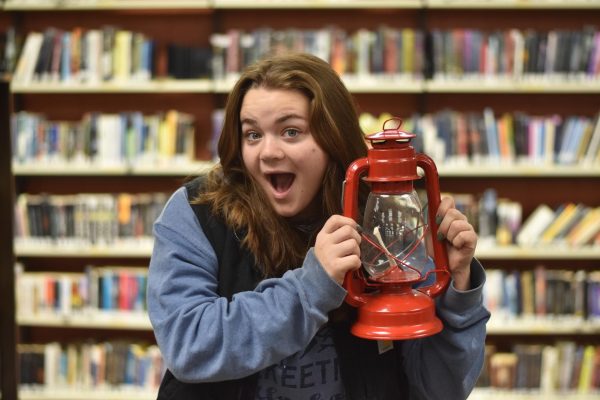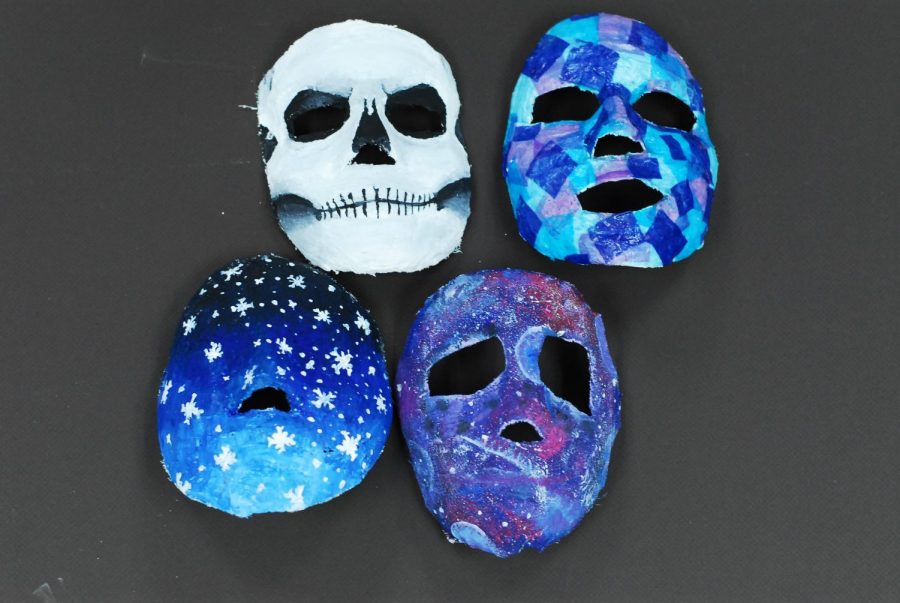Behind the mask
A memorable art project has impacted the entire eight grade class.
These are a few examples of finished masks.
Throughout history, masks have been used for various purposes, like protection, disguise, entertainment, and now learning. For the past few weeks, the eighth grade students in Mr. Zimmerman’s Art Class have been making masks out of plaster gauze.
Mr. Zimmerman revealed why he chose to teach his class how to make these masks, sharing “It’s something that I did when I did my student teaching down in Iowa, and those kids seemed to have fun with it. They get to be creative and paint the masks when they are done and I just wanted to carry on that tradition.”
To create these masks, students start by coating their faces in Vaseline. When I spoke to Mr. Zimmerman, he mentioned how this is often the largest struggle students face. “Students don’t like putting Vaseline on their face because they think it will clog their pores or if kids have a skin irritation then they have to find someone else to put the mask on for them.” Once a student has finished covering their face in Vaseline, their partner begins applying plaster gauze. Then the student must wait 20 minutes for the plaster to set. Bowen Maki described what if felt like to have the mask on his face, highlighting “At the beginning, it felt cold and after I took the mask off, my face felt very dry.”
Once the masks had dried completely, students get to decorate their mask however they choose, using assorted materials such as tissue paper, paint, or feathers. “My favorite part was definitely painting my mask” said Bowen. A big inspiration for his mask was Spider-man. Even though everyone decorated their masks differently, the lessons learned through this special project is something all the eight graders will take with them.

Sara is a senior editor for The Lantern. This is her sixth year writing. Sara enjoys a myriad of activities including taking ill-timed naps and raiding...

